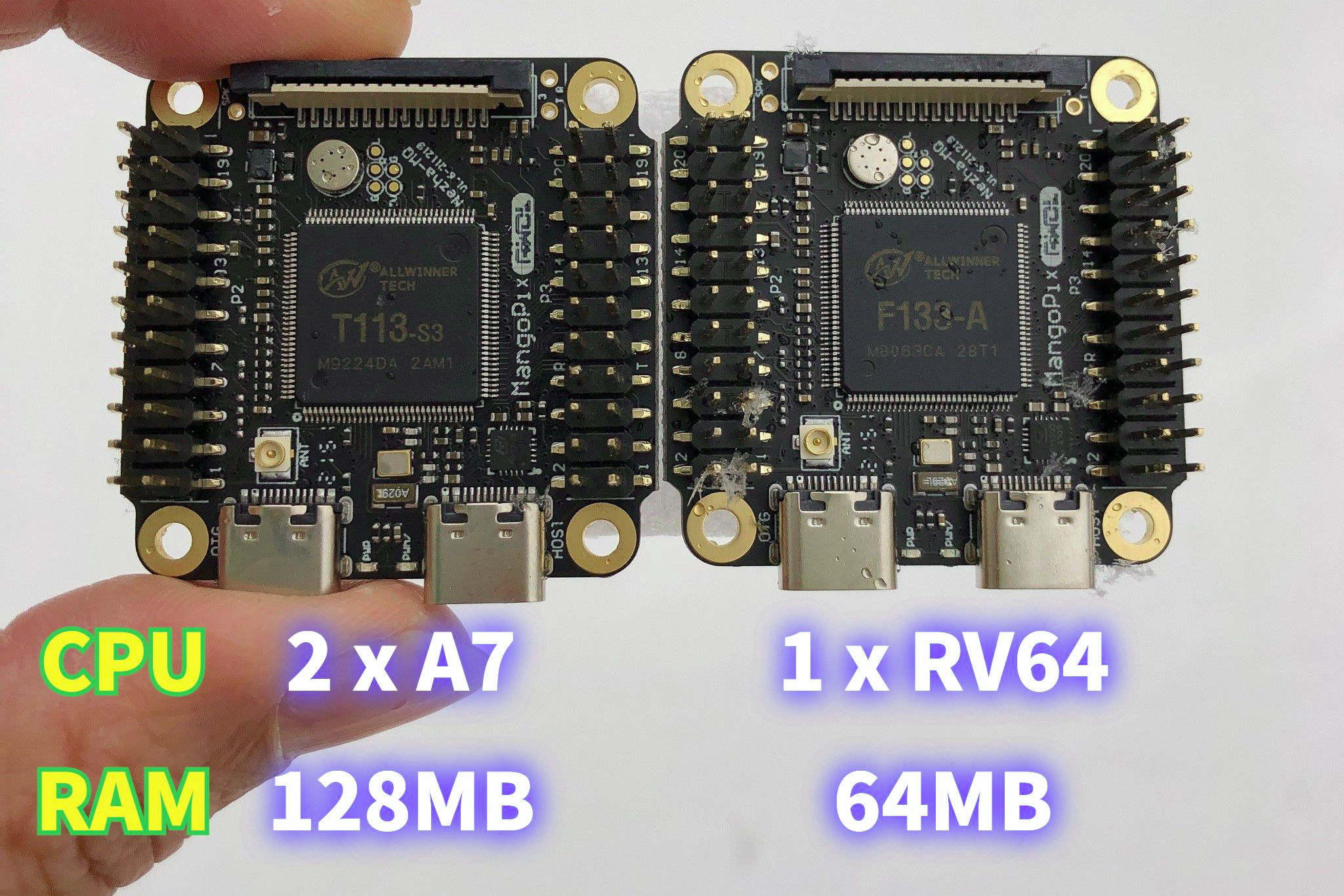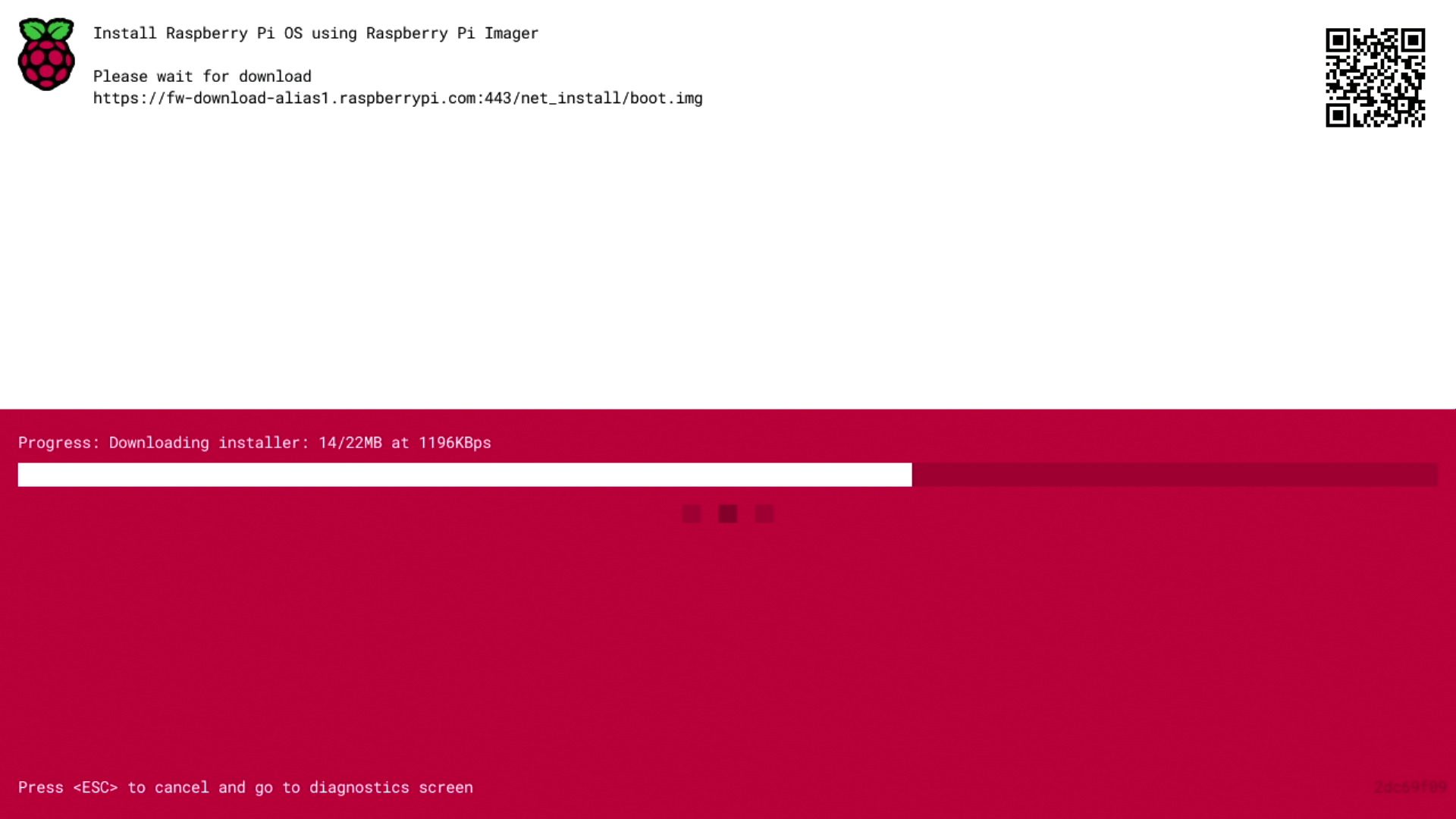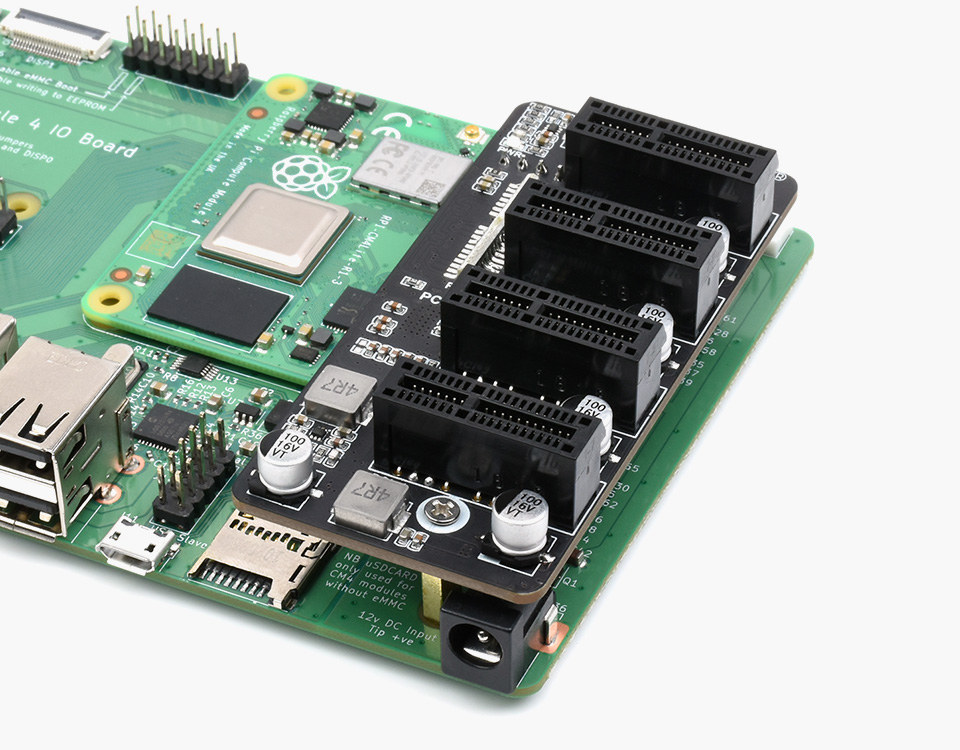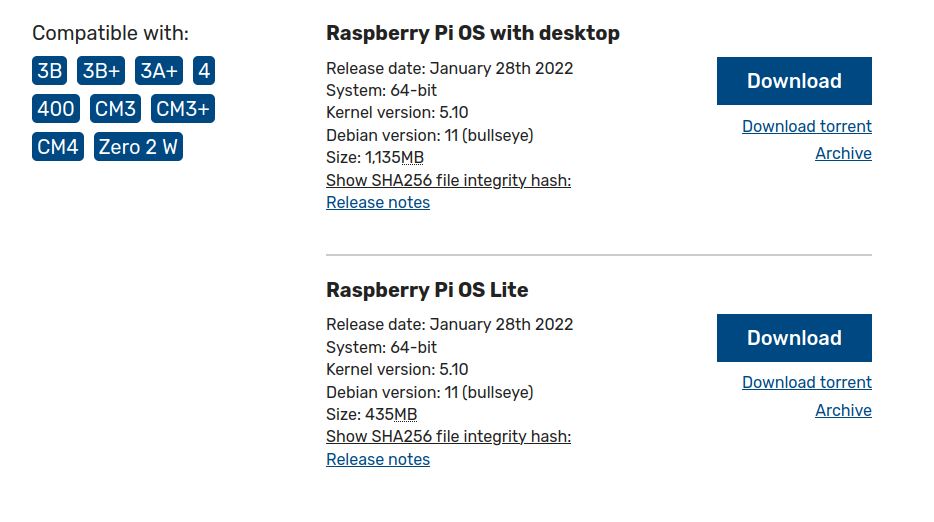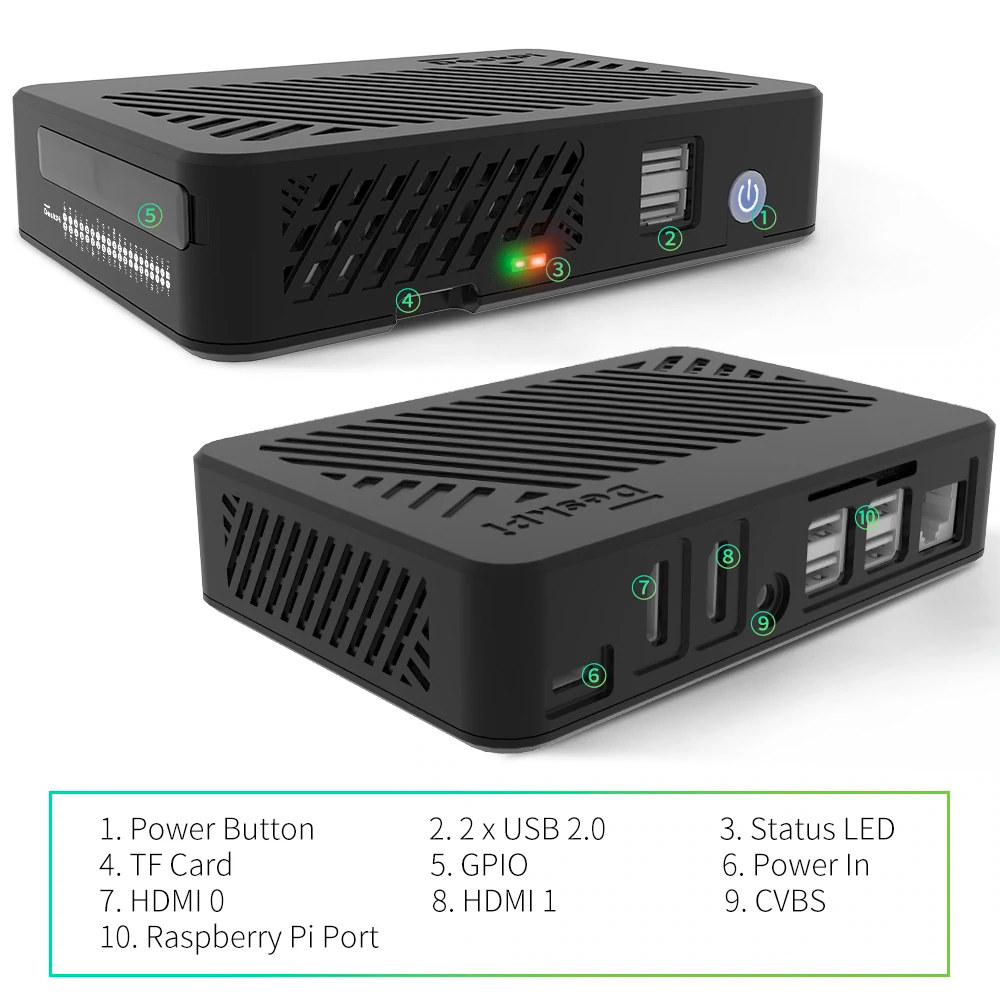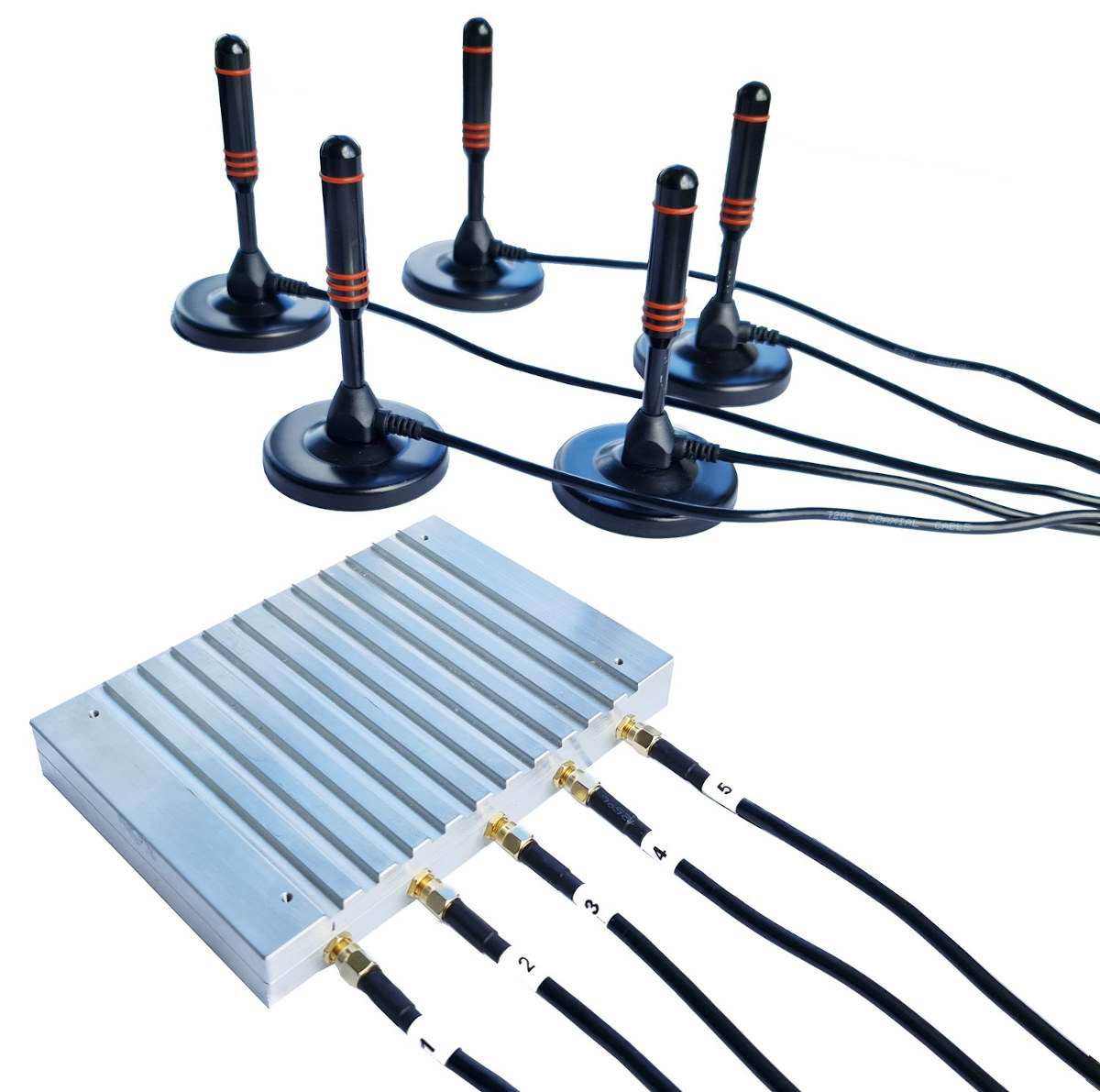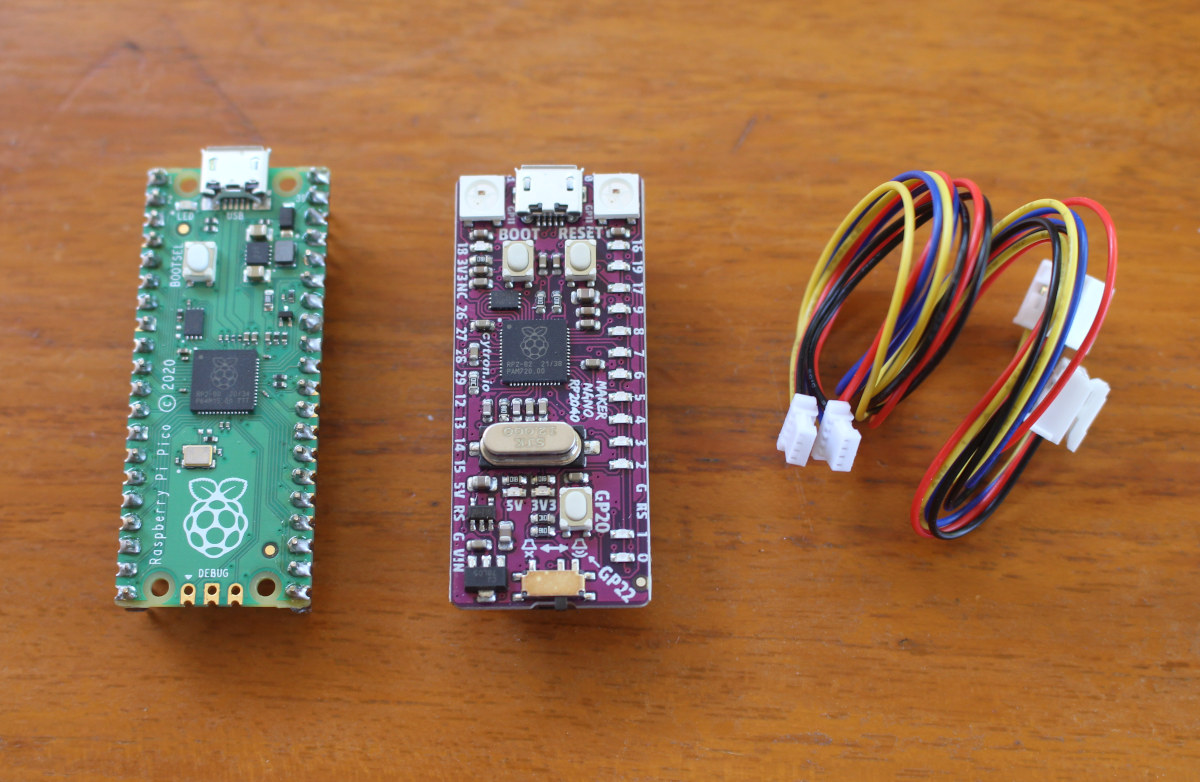Last fall, we wrote about Allwinner D1s/F133-A RISC-V processor and the upcoming MangoPi MQ1, a tiny 4x4cm board based on the processor. The board is not for sale, but we have more details, and the company is also working on an Arm version equipped with Allwinner T113-S3 dual-core Cortex-A7 processor that is pin-to-pin compatible with F133-A SoC. The Allwinner F133-A board will finally be called MangoPi Nezha-MQ, or MangoPi MQ for shorts, and come with 64MB on-chip RAM while the Allwinner T113-S3 board, with 128MB on-chip RAM, will be named MangoPi MQ-Dual. Both are fitted with a Realtek RTL8189-based Wi-Fi module, offer display and camera interfaces, two USB-C interfaces, and headers for GPIOs. MangoPi MQ RISC-V or Arm Linux board MangoPi MQ/MQ-Dual specifications: SoC (one or the other) MangoPi MQ – Allwinner D1s/F133-A 64-bit RISC-V processor @ 1 GHz with 64 MB DDR2 MangoPi MQ-Dual – Allwinner T113-S3 32-bit dual-core […]
Raspberry Pi 4 to support Network install to a blank MicroSD card
The Raspberry Pi 4 will soon be able to install Raspberry Pi OS without the need for external hardware to flash the image. Raspberry Pi Network install will allow users to install a blank MicroSD card into their board, which will trigger the launch of Raspberry Pi Imager on the Raspberry Pi, and flash the image downloaded from the Raspberry Pi website. So far in order to install Raspberry Pi OS, you had to download Raspberry Pi Imager on a computer or a working Raspberry Pi, insert the MicroSD card into the host, and flash the image, before moving the MicroSD card into the Raspberry Pi board. This works just fine for most people, but if the Raspberry Pi is your only computing device, as may be the case in developing countries, that does not work. Network Installs may also speed up the installation process in the classroom where multiple […]
Add four PCIe x1 slots to Raspberry Pi CM4 IO with Waveshare PCIe-Packet-Switch-4P board
The 1-lane PCIe Gen 2 interface in Broadcom BCM2711 processor is exposed in Raspberry Pi CM4, and most carrier boards are exploiting the interface including the official Raspberry Pi Compute Module IO carrier board. But if you ever wanted to connect multiple PCIe cards to the CM4 IO board, Waveshare has got you covered with the PCIe-Packet-Switch-4P that provides four PCIe x1 slots through an ASMedia ASM1184e PCIe switch. PCIe-Packet-Switch-4P expansion board specifications: Compatible with Raspberry Pi Compute module 4 IO board 4x PCIe Gen 2 x1 expansion slots, compatible with PCIe Gen 1 x1 ASM1184e PCIe switch taking 1x PCIe x1 Gen2 upstream port to 4x PCIe x1 Gen2 downstream ports; no driver required, plug and play Power Supply 12V via PCIe interface or 12V via DC jack (or even 5V see warnings below) Dimensions – 82 x 39 mm There are some interesting warnings in the Chinese […]
Raspberry Pi OS 64-bit officially released
The Raspberry Pi Foundation has now officially released Raspberry Pi OS 64-bit about two years after the first beta version was released. Despite some potential performance benefits from using 64-bit code instead of 32-bit, the Raspberry Pi Foundation has resisted moving too quickly to a 64-bit OS because if it would create two separate worlds for their earlier 32-bit boards like Raspberry Pi 2 or Raspberry Pi Zero, and the newer 64-bit boards starting with Raspberry Pi 3 onwards and may confuse users besides the extra workloads. Some of the main reasons to finally release a 64-bit version include improved software compatibility with many closed-source applications only available for arm64, and some open-source ones not fully optimized for the armhf port, some performance benefits, and the ability for a process to make use of the full 8GB RAM, removing the 3GB limit when using LPAE (Large Physical Address Extension) on […]
DeskPi Lite – A Raspberry Pi 4 enclosure with full HDMI ports, two extra USB ports
In 2020, we wrote about the DeskPi Pro enclosure for Raspberry Pi 4 with 2.5-inch HDD/SSD bay, full-sized HDMI ports, and a PWM fansink as an alternative to the popular Argon One case that also brings all ports to a single side and improves cable management. The company informed us of a new low-cost model, the DeskPi Lite, with a more compact design since it lacks the 2.5-inch SATA bay, and two extra USB ports at the front which may be convenient to connect USB flash drives or anything that may be temporarily connected to your Raspberry Pi 4. DeskPi Lite features: All main ports on the rear panel: USB Type-C power input 2x full-size HDMI ports AV port (CVBS + stereo audio) 2x USB 3.0, 2x USB 2.0, and Gigabit Ethernet ports directly from the Raspberry Pi 4 SBC Font panel ports/features: 2x USB 2.0 ports 2s status LEDs […]
KrakenSDR is a 5-channel software-defined radio based on RTL-SDR
KrakenRF KrakenSDR is a software-defined radio (SDR) with five coherently-operated receive channels that’s basically the equivalent of five cheap RTL-SDR USB dongles based on the R820T2 chip with a single board housed in a metal enclosure equipped with five custom antennas. KrakenSDR operates in the usual 24 MHz to 1766 MHz tuning range and connects over USB to the host system, preferably a Raspberry Pi4 as the open-source Core DAQ and DSP software is designed for the popular single board computer. There’s also an Android for location finding that is free to use for non-commercial applications. KrakenSDR specifications: Five-channel, coherent-capable RTL-SDR (5x R820T2 tuners + RTL2832U ADCs), all clocked to a single local oscillator, ESD protection 5x SMA Antenna inputs Tuning Range – 24 MHz to 1766 MHz standard R820T2 RTL-SDR range and possibly higher with hacked drivers Built-in automatic coherence synchronization hardware Automatic coherence synchronization and management via provided […]
Maker Nano RP2040 offers Arduino Nano, Grove and Qwiic modules compatibility
Cytron Maker Nano RP2040 is board similar to Raspberry Pi Pico but with Arduino Nano form factor, a proper reset button, two RGB LEDs, single color LEDs for some GPIOs, a buzzer, as well as two Qwicc/STEMMA QT connectors that can also be used to connect Seeed Studio Grove modules using provided conversion cables. While the board mostly aims to be an Arduino Nano/Maker Nano upgrade, there are some notable differences with the I/O voltage being limited to 3.3V without 5V tolerance, and there are only four ADC inputs (A0 – A3) instead of eight on the Arduino Nano. Maker Nano RP2040 specifications: MCU – Raspberry Pi RP2040 dual-core Arm Cortex-M0+ microcontroller @ 125 MHz with 264KB internal RAM Storage – 2MB flash Audio – Piezo buzzer with mute switch Expansion 2x 15-pin headers with 22x GPIOs, 14x of which with LEDs,2x I2C, 2x UART, 2x SPI, 14x PWM, 4x […]
The Eclipse Oniro Project aims to deliver consumer & IoT software that works across multiple platforms
Several of the embedded talks at FOSDEM 2022 mention the “Eclipse Oniro Project”. I had never heard about that project from the Eclipse Foundation, so let’s see how they describe it: Oniro is an Eclipse Foundation project focused on the development of a distributed open source operating system for consumer devices, regardless of the brand, model, make. Oniro is a compatible implementation for the global market of OpenHarmony, an open source operating system specified and hosted by the OpenAtom Foundation. Designed with modularity in mind, Oniro offers greater levels of flexibility and application portability across the broad spectrum of consumer and IoT devices — from tiny embedded sensors and actuators, to feature rich smart appliances and mobile companions. As a distributed and reusable collection of open source building blocks, Oniro enables compatibility with other open source technologies and ecosystems. Through close collaboration with projects and foundations such as OpenHarmony from […]


